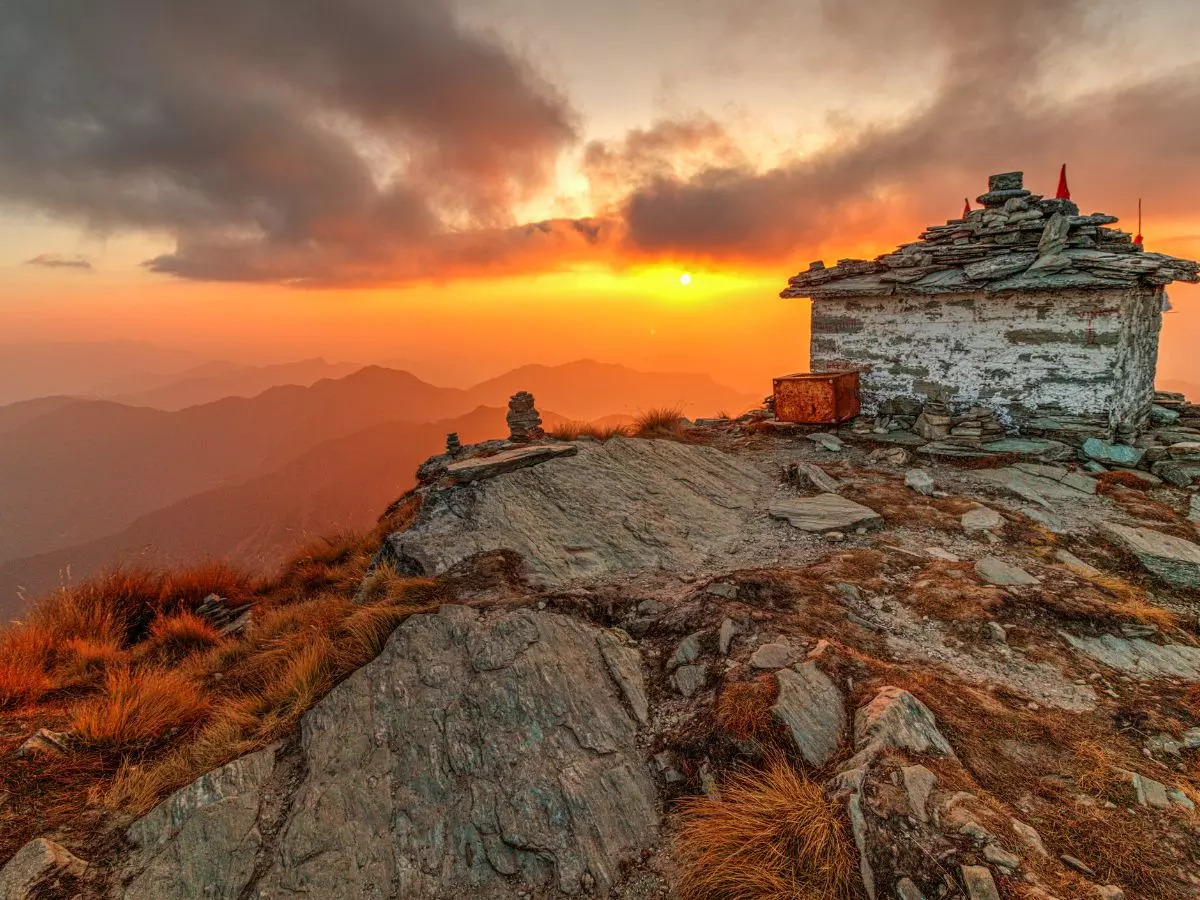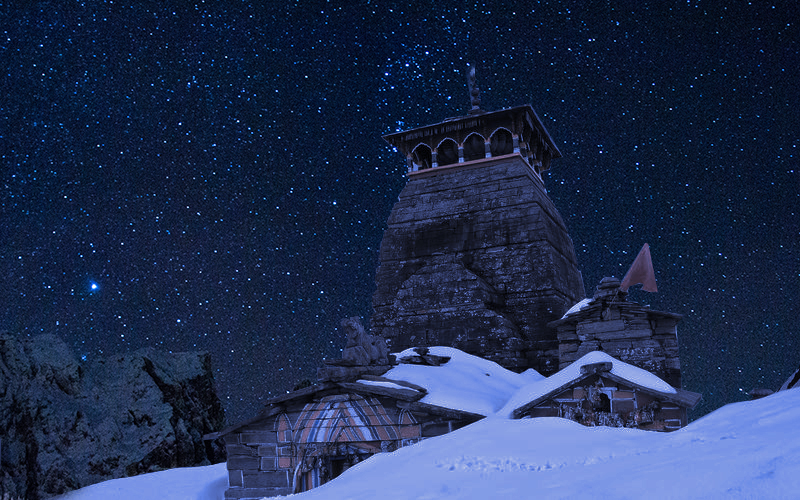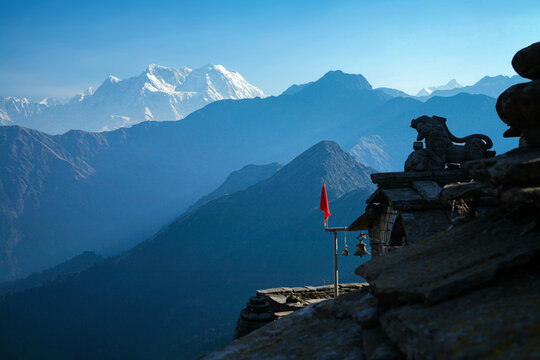Where the Hills Call: Chopta Chandrashila Trek for Delhi Explorers
Published on June 28, 2025
Chopta chandrashila trek from delhi, For those in Delhi dreaming of alpine sunrises, peaceful trails, and Himalayan majesty—the Chopta Chandrashila trek is your perfect calling. Nestled in the Garhwal Himalayas, Chopta is the starting point of one of India’s most scenic and spiritually rich treks, taking you through alpine meadows, sacred temples, and finally to the Chandrashila summit, offering a 360° view of majestic peaks like Nanda Devi, Trishul, and Kedarnath.
Why Choose the Chopta Chandrashila Trek from Delhi?
If you’re planning a short Himalayan escape from Delhi, the Chopta tour package from Delhi is your ideal blend of spirituality, nature, and adventure. A scenic overnight drive leads you to the serene village of Chopta—often referred to as the “Mini Switzerland of India”—where your journey to Tungnath and Chandrashila begins.
-
Distance from Delhi to Chopta: Approx. 450 km
-
Trek difficulty: Easy to moderate
-
Best for: Beginners, couples, weekend trekkers, and nature lovers

Journey Through the Clouds: Delhi to Chandrashila Itinerary
Day 0: Delhi to Rishikesh to Sari Village
- Departure: Start your journey from Botanical Garden Metro Station at 10:00 PM.
- Overnight Journey: Travel overnight towards Sari Village via Rishikesh.
- Stop at Devprayag: Witness the mesmerizing confluence of the Bhagirathi and Alaknanda rivers along the way.
Day 1: Sari Village to Deoriatal
- Arrival at Sari Village: Check into your homestay and take some time to freshen up.
- Trek to Deoriatal: Begin your trek to Deoriatal (2.5 km, approximately 1.5–2 hours).
- Enjoy Deoriatal: Soak in the serene beauty of the lake and the surrounding landscapes.
- Return to Sari Village: Head back to Sari Village and enjoy a peaceful evening.
Day 2: Sari Village to Tungnath & Chandrashila
- Breakfast: Start your day with a hearty breakfast at your homestay.
- Drive to Chopta: A scenic drive of about 1 hour from Sari Village.
- Trek to Tungnath Temple: Embark on a 3.5 km trek to the sacred Tungnath Temple.
- Summit Chandrashila: Extend your trek by 1.5 km to reach the breathtaking Chandrashila summit.
- Return to Chopta/Sari: After the trek, return to Chopta or Sari for an overnight stay at the campsite.
Day 3: Chopta to Delhi
- Breakfast: Enjoy an early breakfast at your campsite in Chopta.
- Departure: Begin your journey back to Delhi in the early morning.
- Visit Dhari Devi Temple: Stop by the revered Dhari Devi Temple en route.
- Arrival in Delhi: A long drive of approximately 10–12 hours marks the end of your adventure.

The Route: Chopta to Tungnath to Chandrashila
The core highlight of your journey is the famous Chopta Tungnath trek, leading to the Tungnath temple, the highest Shiva temple in the world, followed by a steep but short climb to Chandrashila Peak.
-
Tungnath trek distance: ~3.5 km from Chopta
-
Chandrashila summit trek: ~1.5 km from Tungnath
-
Total elevation: Up to 4,000 meters (13,000+ ft)
This Chopta Chandrashila trek from Delhi is accessible most of the year and especially enchanting during spring and winter—offering wild rhododendron blooms or snow-covered trails.
What to Expect in the Chopta Tour
Our curated Chopta tour packages ensure a hassle-free adventure for every type of traveler—whether you're traveling solo, as a group, or looking for a romantic escape.
✔️ Trip Highlights:
-
Scenic drives from Delhi, Rishikesh, or Haridwar
-
Guided Chopta Tungnath trek from Delhi
-
Trekking to the Tungnath temple trek and Chandrashila summit trek
-
Stay in cozy alpine camps or eco-lodges
-
Bonfire evenings and stargazing in the Himalayas
-
Immersion in local Garhwali culture
Special for Couples: Chopta Tour Package for Couple
Imagine walking hand in hand through pine forests, watching the sunrise together from Chandrashila, and enjoying candle-lit dinners in the hills. Our Chopta tour package for couple offers a personalized escape into the mountains—perfect for honeymoons or romantic weekend trips.
Flexible Departure Options:
-
Chopta tour package from Delhi – with overnight Volvo or private car
-
Tungnath tour package from Delhi – includes temple visit & summit trek
-
Tungnath trek package from Rishikesh/Haridwar/Dehradun – custom pick-ups
-
Chopta tour package from Haridwar – great for spiritual adventurers

Inclusions
At TourMyHoliday, we make sure your journey to Chopta is smooth, scenic, and stress-free. Our packages include:
-
Delhi to Chopta & return travel (via tempo traveler or Volvo – as per package)
-
Accommodation in camps or eco-lodges (on twin/triple sharing basis)
-
All Meals during the trek (Veg) – Breakfast, Lunch & Dinner
-
Guided trek to Tungnath and Chandrashila with local expert
-
Evening bonfire & light music (weather permitting)
-
Trek permits & forest entry charges
-
Experienced Tour Captain throughout the trip
-
Basic first-aid kit
-
Unlimited memories and stargazing nights
Exclusions
To keep your trek light and transparent, here’s what’s not included:
-
5% GST
-
Any entry tickets to temples or paid sightseeing if applicable
-
Medical or travel insurance
-
Personal expenses like snacks, drinks, mineral water, etc.
-
Mule/porter service for personal luggage (available at extra cost)
-
Tips, personal shopping, and camera/video fees
-
Any extra meals not mentioned in the itinerary
-
Expenses due to weather delays, roadblocks, or natural calamities
-
Anything not listed in “Inclusions”
Trek Insights & Quick Facts
-
Chopta Tungnath Trek Distance: ~3.5 km
-
Chandrashila Trek Distance: ~1.5 km
-
Chopta Chandrashila Trek Distance (Round Trip): ~10 km
-
Tungnath Trip Cost: Varies by package (budget to premium)
-
Chopta Chandrashila Trek Price: ₹6,999 to ₹15,000 approx.
-
Tungnath Package from Dehradun and other major cities available

Where Seasons Paint the Sky: Weather in Chopta Chandrashila Throughout the Year
Tucked in the Garhwal Himalayas, Chopta Chandrashila offers weather that transforms its landscapes from blooming meadows to snow-blanketed peaks. Whether you're a trekker chasing golden sunrises or a snow-lover yearning for icy trails, the weather in Chopta Chandrashila sets the stage for every kind of Himalayan experience.
Spring (March to May): The Blooming Trail
Spring is one of the best seasons for the Chopta Tungnath trek. The air is crisp, skies are clear, and rhododendrons bloom in vibrant reds and pinks along the path to Tungnath temple. Day temperatures range between 10°C to 20°C, while nights can dip to around 5°C. Ideal for trekkers and nature photographers alike!
Summer (June to Early July): Pleasant & Peaceful
In early summer, Chopta becomes a cool retreat from the plains. Temperatures hover between 12°C and 22°C, making it perfect for families and couples booking a Chopta tour package for couple. The trails are green, and the skies remain blue—great for camping under the stars.
Monsoon (Mid July to Mid September): Misty & Moody
During the monsoon, Chopta sees intermittent rainfall, mist-covered forests, and slippery trails. Trekking can be challenging, but the region is incredibly lush. Due to landslides and limited visibility, it’s not the most recommended time for the Chopta Chandrashila trek from Delhi.
Autumn (Mid September to November): Trekker’s Delight
Post-monsoon freshness and crystal-clear skies make autumn a favorite among trekkers. With daytime temperatures between 10°C to 18°C and chilly nights, this is the best time to attempt the Chandrashila summit trek for uninterrupted sunrise views and great visibility of Nanda Devi and Kedarnath peaks.
Winter (December to February): Snow-Covered Serenity
Winter transforms Chopta into a snowy wonderland. The Chopta Chandrashila trek distance becomes a scenic walk through snow-covered pines and meadows. Temperatures often drop below 0°C at night, and daytime highs range from -5°C to 10°C. Ideal for adventure seekers and those looking for a snow trek experience.
Best Time for the Trek
-
Spring (March to May): Rhododendron blooms, clear skies
-
Autumn (September to November): Best for sunrise views
-
Winter (December to February): Snow trek experience (moderate difficulty)
Avoid the monsoon season for trekking as trails may be slippery.
Sleep Beneath the Stars: Cozy Stays in Chopta Chandrashila
The beauty of the Chopta Chandrashila trek isn’t just in the trails—it’s also in where you rest. After a day of adventure and breathtaking views, you deserve a warm, peaceful night under Himalayan skies. Whether you’re a backpacker, couple, or group traveler, Chopta offers a variety of comfortable, scenic, and nature-friendly accommodation options.
Types of Accommodation in Chopta Chandrashila Region
1. Alpine Camps in Chopta
Stay in waterproof alpine tents with sleeping bags, foam mattresses, and cozy quilts. These campsites often include bonfires, common dining areas, and basic restroom facilities—ideal for nature lovers seeking an authentic Himalayan feel.
Perfect for: Budget travelers, trekkers, and groups
2. Luxury Swiss Tents
Upgrade your stay with Swiss-style tents featuring attached washrooms, wooden flooring, and proper bedding. These tents offer a blend of wilderness and comfort, often accompanied by bonfire nights and folk music evenings.
Perfect for: Couples, family travelers, honeymooners
3. Eco-Lodges & Guesthouses
For those who prefer solid walls and a little more insulation, Chopta also offers guesthouses and eco-lodges nestled in the forests or on village edges. These provide stunning mountain views, home-cooked meals, and local warmth.
Perfect for: Solo travelers and those seeking a quiet stay
Experience That Goes Beyond Just a Stay
-
Wake up to views of snow-capped peaks
-
Enjoy warm chai by the bonfire under a star-lit sky
-
Watch the mist roll over meadows in the morning
-
Hear Himalayan birds and temple bells as your natural alarm clock
Popular Areas to Stay During the Trek
-
Chopta Base Camp – The starting point of the Chopta Tungnath trek, offering most accommodation options.
-
Dugalbitta & Baniyakund – Quieter, scenic stays just 2–4 km from Chopta with fewer crowds.
-
Sari Village – Ideal if you’re combining Deoria Tal with your Chopta Chandrashila trek.
Pro Tips for Accommodation Booking in Chopta
-
Book in advance during peak seasons (April–June, Sept–Nov)
-
In winter, check for availability of insulated tents and hot water
-
Ask for local meals for a true Garhwali taste
-
Electricity can be limited—carry power banks and torches

What to Pack for Chopta Chandrashila Trek
✅ Clothing Essentials
-
Thermal innerwear (especially for winter treks)
-
Layered jackets (1 fleece, 1 down jacket/windcheater)
-
2–3 quick-dry T-shirts
-
1–2 trek pants (avoid jeans)
-
Woolen cap + sun cap
-
Gloves (woolen & waterproof)
-
Woolen socks + extra cotton socks
-
Raincoat or poncho (in monsoon months)
Footwear
-
Trekking shoes with good ankle support and grip (Quechua/Forclaz preferred)
-
Flip flops/slippers for camps
Personal Utilities
-
Water bottle (1–2 liters; insulated if trekking in snow)
-
Sunscreen (SPF 40+)
-
Lip balm + moisturizer
-
Wet wipes & tissue rolls
-
Personal toiletries (toothbrush, paste, soap, sanitizer)
-
Towel (quick-dry)
Accessories & Gear
-
Day backpack (20–30 liters)
-
Headlamp or torch (with extra batteries)
-
Sunglasses (UV-protected)
-
Power bank
-
Personal medical kit (include band-aids, painkillers, altitude sickness meds, etc.)
-
ID proof (Aadhar, passport, etc.)
-
Camera/Phone with extra storage
-
Snacks (dry fruits, protein bars, chocolates)
Winter Add-Ons (If visiting Dec–Feb)
-
Snow gaiters (optional)
-
Woolen balaclava or scarf
-
Hand & foot warmers (optional)
What to Skip for the Trek
-
Heavy luggage or suitcases – Use a backpack or duffel bag only
-
Unnecessary electronics – Laptops, tablets, and gadgets are best left at home
-
Excessive clothes/shoes – Stick to minimum pairs with multi-use function
-
Perfumes & bulky cosmetics – Adds weight and are unnecessary for the trek
-
Non-biodegradable items – Avoid single-use plastics and carry eco-friendly items
-
Alcohol/smoking products – Not suitable at high altitudes and often restricted
-
Cash over ₹5,000 – Mobile payments work in base towns; ATMs in Ukhimath/Saari

Chopta: A Timeless Hamlet Rooted in Himalayan Legend
Tucked quietly in the lush lap of the Garhwal Himalayas in Uttarakhand, Chopta is more than just a base for treks—it's a spiritual, historical, and ecological jewel that has evolved through time while remaining untouched by commercialization. From sacred legends to environmental significance, Chopta’s story is as rich and peaceful as its alpine meadows.
The Mythical Roots: Legends of Shiva and the Pandavas
The spiritual essence of Chopta is tied deeply with the Mahabharata. According to legend, after the Kurukshetra war, the Pandavas sought to atone for their sins by seeking Lord Shiva. However, Shiva avoided them by taking the form of a bull and hiding in the Himalayas. He later revealed himself at Tungnath, the highest Shiva temple in the world, located just above Chopta. This led to the creation of the Panch Kedar, with Tungnath being one of the most sacred among them.
The trail from Chopta to Tungnath and Chandrashila is therefore not just a trek—it's a pilgrimage, with every step immersed in devotion and lore.
Early Settlement & Pastoral History
Historically, Chopta was never a large human settlement but has always been home to small indigenous Himalayan communities such as the Bhotiya and Garhwali people. These pastoral communities engaged in seasonal livestock grazing and lived harmoniously with nature. Their wooden huts and sustainable lifestyle have helped preserve the fragile ecology of the region for centuries.
Chopta: The Valley of Meadows & Biodiversity
Chopta is often referred to as the ‘Mini Switzerland of India’ (although you’ve opted not to use that label in your content), and for good reason. Its rolling meadows (bugyals) are among the most pristine in Uttarakhand. These grasslands, rich with wildflowers, have been used for centuries by shepherds during summer migrations.
In modern history, Chopta gained recognition as a biodiversity hotspot. The entire region forms a part of the Kedarnath Wildlife Sanctuary, home to rare Himalayan species like the musk deer, monal pheasant, Himalayan tahr, and even the elusive snow leopard in higher altitudes.
The Rise of Trekking & Eco-Tourism
The serene beauty of Chopta remained relatively unknown to tourists until the early 2000s, when adventure seekers and spiritual travelers began spreading the word about the Chopta Tungnath trek and the majestic Chandrashila summit.
As tourism slowly grew, locals began offering home stays, camps, and eco-lodges, turning Chopta into a beloved destination for trekkers, yogis, nature photographers, and spiritual seekers alike. Today, the Chopta tour packages, especially from Delhi, Haridwar, and Rishikesh, are some of the most sought-after weekend and short-trek plans.
Spiritual Significance & Energy Vortex
Tungnath and the Chandrashila peak are considered energy centers by sages and yogis. Many believe the area is aligned with powerful energy fields, making it ideal for meditation and spiritual awakening. Several ashrams and spiritual groups organize meditation retreats and yoga treks in the Chopta region, particularly at Chandrashila during sunrise.
Sustainability & Preservation Efforts
Due to increasing popularity, efforts have been made by the Uttarakhand Forest Department and local communities to preserve the fragile ecosystem. Restrictions on vehicular traffic, waste control initiatives, and promotion of eco-tourism practices help protect the alpine meadows and rare flora and fauna.
Chopta has become a model for low-impact mountain tourism, where travelers are encouraged to leave no trace, support local businesses, and respect the spiritual essence of the land.

Conclusion: A Living Tapestry of Heritage & Nature
Chopta chandrashila trek from delhi may be small in size, but its historical, spiritual, and ecological significance is vast. It's a land where ancient myths echo through pine forests, where Himalayan wildlife thrives, and where trekkers and pilgrims walk the same path—toward peace, discovery, and divine perspective.
From its mythical origins tied to Lord Shiva, to its modern role as an eco-trekking hub, Chopta continues to inspire, heal, and amaze every soul that steps on its sacred soil.
Frequently Asked Questions:
1. What is the best time to do the Chopta Chandrashila Trek?
March to May and September to November are ideal for clear skies and scenic views. December to February is great for snow trekking.
2. How difficult is the Chopta Chandrashila trek?
It is an easy to moderate trek, perfect for beginners, families, and nature lovers with basic fitness.
3. What’s included in the Chopta tour packages from Delhi?
Most packages include transportation, stay, meals, guided trek, permits, and sightseeing. Some offer bonfire nights and cultural activities.
4. How long is the Chopta Tungnath and Chandrashila trek?
The trek is approximately 5 to 6 km one way – about 3.5 km to Tungnath and another 1.5 km to Chandrashila summit.
5. Can I do the trek in winter with snow?
Yes, the winter trek offers a unique snow experience. However, proper gear and guidance are necessary for safety.
6. What kind of stay options are available in Chopta?
Accommodations include alpine tents, Swiss camps, eco-lodges, and homestays with basic to mid-range comfort.
7. Is the Chopta Chandrashila trek good for couples?
Yes, it is a romantic and peaceful getaway with scenic views. Many travel providers offer customized packages for couples.
8. How much does the Chopta Chandrashila tour package cost?
Packages range from ₹5,499 for budget trips to ₹14,999 or more for luxury or personalized couple packages.
9. Is there mobile network or electricity in Chopta?
Network is limited – mostly BSNL and Jio at some points. Electricity is minimal, often solar-powered at camps.
10. What should I pack for the Chopta trek?
Pack warm layers, trekking shoes, rainwear, reusable water bottle, personal hygiene items, and a small medical kit.
.jpg)

.jpg)
